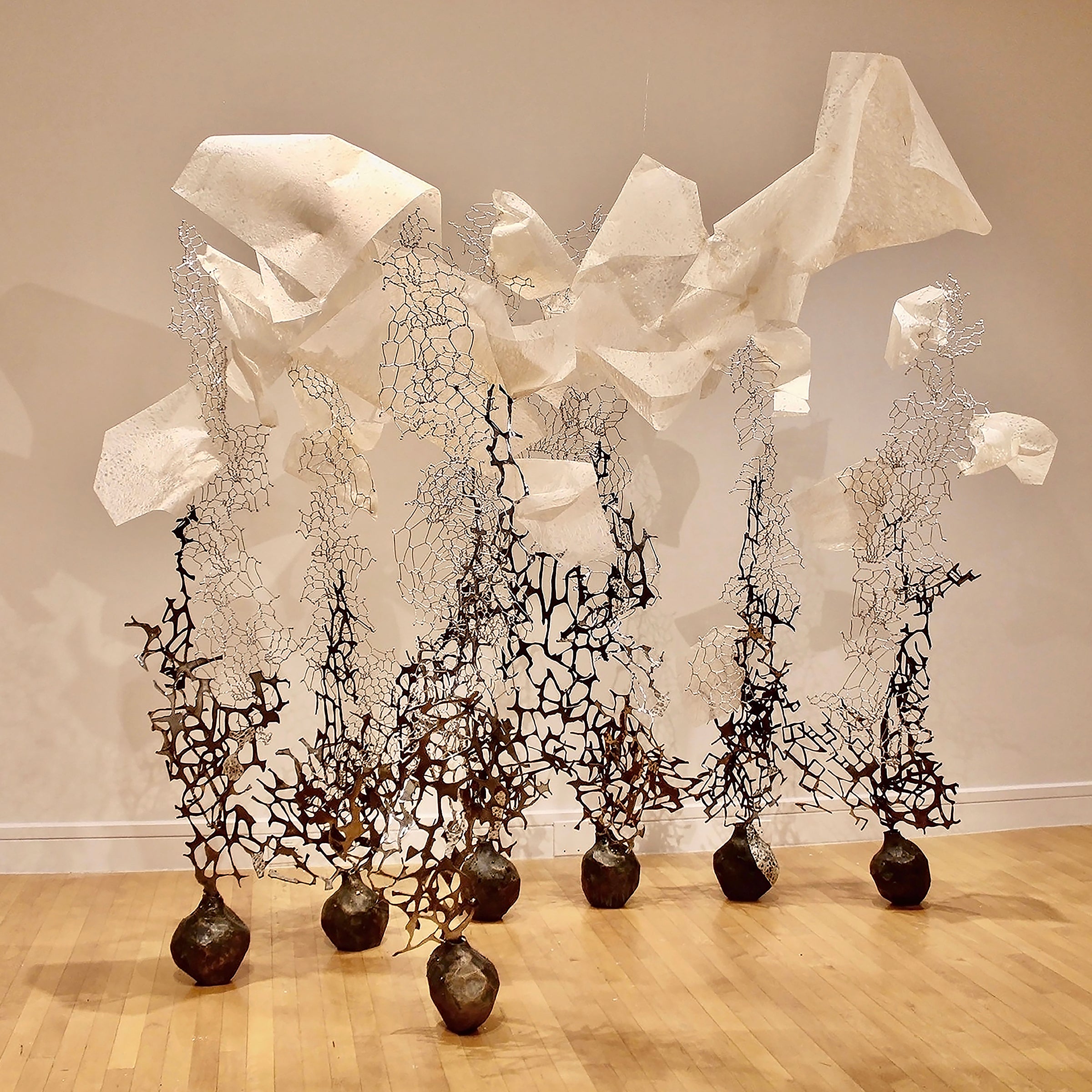When Yas Crawford started feeling the effects of her chronic illness, she says she felt as if her body and mind were at war. “When you’re ill for a long time, your body takes over,” she says. “Your brain wants to do one thing, and your body does something else.”
Crawford has myalgic encephalomyelitis, also called chronic fatigue syndrome. She says her illness made her ruminate on interoception, the perception of the body’s internal state. People with this condition, particularly those who are afflicted for a long time, report heightened awareness of their body’s inner workings—such as their heartbeat and temperature.
We commonly think of five senses—sight, sound, smell, touch and taste—and we have the senses of balance and body position as well. But interoception could be called an “eighth sense,” argues Crawford, who has a background in geology and microbiology and a master’s degree in photography. That title inspired her to make an eponymous collection of artwork. Cognition IX, an image from that collection, recently won the 2021 Art of Neuroscience competition held by the Netherlands Institute for Neuroscience.
Now in its 11th year, the Art of Neuroscience showcases the intersection of art and neuroscience through multimedia. Static images comprised the works recognized in the competition’s early years, but more recent submissions have included videos, sculptures and even interactive online poetry.
Cognition IX showcases Crawford’s experience in film photography and digital editing with a black-and-white image of a seascape in the approximate shape of a brain. From the rough region of where the brain stem meets the thalamus—the structure that relays sensory signals to the cerebral cortex—individual fibrils appear to explode outward. The image is in equal parts ordered and disordered: the fibers snake around one another on the outside of the beanlike shape and shoot out in near parallel closer to its center.
Crawford says her art is meant for others with chronic illnesses who resist being defined by them. Intertwining the internal and external lives of a person is a theme in her work.
Honorable mentions of the competition represent a variety of formats and media: a sculpture, mini documentary, mapping installation and scored video.

The sculpture Change of Heart (변심), by recent Davidson College graduate Adrienne Lee, tackled the theme of neural degeneration with a metal-and-paper representation of Purkinje cells, which are specialized neurons that play a role in coordination, learning and movement. Degenerative diseases are “akin to an act of betrayal against the beauty of one’s accumulated life experiences,” Lee writes in her artist’s statement. The metalwork forming the dendrites of the Purkinje cells incorporates letters from the Korean alphabet, a nod to Lee’s personal history. Her studio art degree and neuroscience minor have informed her other work, too, including a steel brain-shaped sculpture that is big enough to encircle a viewer’s head.
Another honorable-mention piece is The Brainwave Project, by Qi Chen, an instructor at Wuhan Textile University, explores the artist’s project to stimulate the brains of people in a minimally conscious state and communicate the results to their family with artwork. She created a device to convert brain waves into images and make an otherwise sterile readout accessible and meaningful to onlookers. Chen synthesized her journey designing and testing the devices in a five-minute documentary, calling it an integration of “functional art and art therapy.”
Independent artist Guihan Lu created Self Evolution, an installation that plays with theater and self-portraiture by projecting images recorded from a brain-wave kit that slowly morph into a recognizable representation of the viewer. She says she was inspired by Abraham Ortelius, a 16th-century Flemish cartographer who created the modern atlas, which he entitled Theatre of the World. Lu’s project, Self Evolution, was awarded an honorable mention and transforms the inner workings of the mind into an immersive video and performance—an observable spectacle.
Sarshar Dorosti, affiliated with the Tehran University of Art in Iran, composed a video entitled Fractal Brain. Fractals are mathematical figures with motifs that repetitively occur at smaller scales—in other words, a never-ending pattern. Fractal geometry is found throughout nature, in objects such as a fern frond and a head of Romanesco. Fractal Brain displays stills and animations of fractals overlaid with eerie, metallic droning noise. In February Dorosti was first author of a preprint study investigating the brain’s response to fractal animations.


